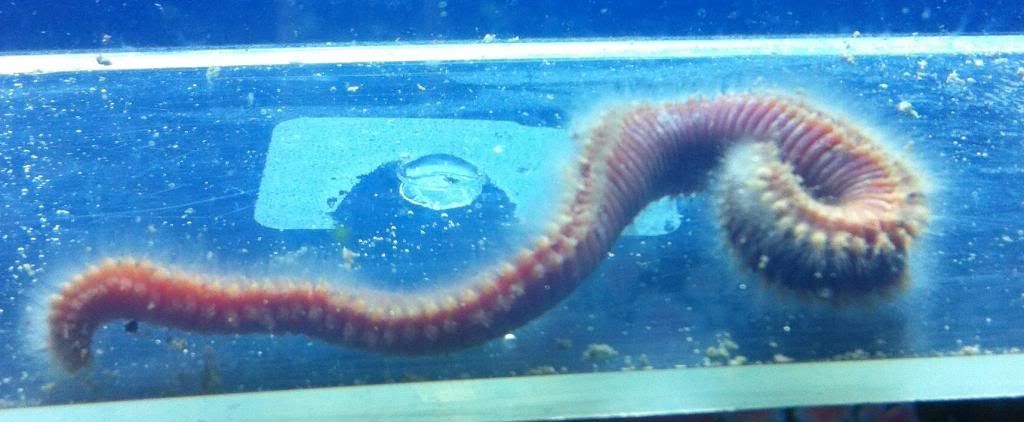I have a couple of these worms in my tank. Have had them for over four years. I haven't noticed any issues and I keep sps corals. This is a good article that will describe your species in more detail:
http://www.advancedaquarist.com/2003/5/short
As for your question on the anemone ID. I'm not sure about the anemone in front of the rock that you circled, the tentacles are hard to see to determine what it is, but the one in the hole behind the rock looks like a Pseudocorynactis, or ball anemone. You can clearly see the balls at the tips of the tentacles in your photo.
The ones I have in my tank have red/pink starks, have white mouths, tentacles are transparent/clear and w/white balls on tips of tentacles. If you feed it little bits of food, using a skewer, it will color-up nicely.
More Info if you are interested:
A debate continues in academia differentiating among the genera of the Corallimorphidae family, which includes the genera Corynactis, Pseudocorynactis, Corallimorphus, Neactis, Sideractis, and Paracorynactis. Reclassification occurs every few years or so it seems. Mayja posted an article that describes both the Corynactis and Pseudocorynactis (at end of article). Corynactis is restricted to temperate waters (cold waters) with the exception of C. parvula that can colonize some tropical environments. Pseudocorynactis and Paracorynactis are tropical-subtropical genera. (Ocana, 2009)
Some basic general differences of Pseudocorynactis is its large size and solitary habit. One thing that we need to keep in mind is that the family of Corallimorphidae has undergone reclassification of taxa many times over the last two decades or so, and there are more and more species being identified and reclassified based off of biology, ecology, and behavior. Particularly with Corynactis, Pseudocorynactis, and Paracorynactis.
You have one of these species. It is a good anemone, not a pest in that it won't spread or cause havoc in your tank. Many people will just tell you that you have either a Corynactis species or Psuedocorynactis species.

